Welcome to
the Blog
Replete Wellness
RW
The Replete Guide to Non-Toxic Personal Care Products
We totally get it, the ‘clean’ make up & skin care world can be absolutely overwhelming. That’s why we are all about educating our patients on the worst offenders to look out for in their beautiful products while encouraging these replete beauties to make small changes to their daily beauty routines.
Ingredients found in your skincare products have sadly been shown to cause endocrine disrupting effects, including thyroid disturbance, cancer and hormonal issues. While most of these ingredients have some research showing possible safety when used in small quantities no one has ever done a study on the cumulative effects of all of these chemicals when applied daily. It’s not one product or one chemical that’s worrisome, it’s the accumulation of a number of products, and the reapplication of those beauty products every single day for years. On average, Canadian women use 9 personal care products daily, which exposes us to hundreds of unique chemicals, most of which haven’t been accurately safety tested.
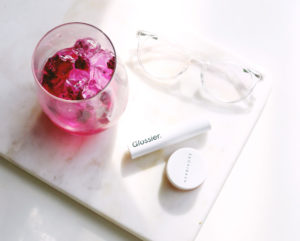
While The following chemicals are the worst offenders and should be avoided when possible:
Petroleum jelly:
- What is it? It’s mixture of mineral oils and waxes that results as a by-product of crude oil extraction.
- Where to find it: Petrolatum is in one out of every 14 cosmetic products on the market, including 15 percent of lipsticks and 40 percent of baby lotions and oils.
- Why it’s a problem: There’s a high risk of contamination from polycyclic aromatic hydrocarbons (PAHs); cancer-causing chemicals found in crude oil and its by-products.
- Aliases: petrolatum, white petroleum, and soft paraffin
Formaldehyde
- What is it? A colorless poisonous gas synthesized by the oxidation of methanol and used as a preservative.
- Where to find it: Formaldehyde-releasing agents are used as preservatives in a wide range of cosmetics and most nail polishes and nail-hardeners contain residual formaldehyde concentrations up to 0.5 per cent.
- What it’s a problem: Formaldehyde is well-document human carcinogen. Though presently banned in the EU, Health Canada considers formaldehyde to be safe when used in small concentrations on the skin. Their claim is that it is such a small amount it cannot be harmful, however repeated, long-term exposure is shown to be associated with poor overall health outcomes.
- Aliases: Diazolidinyl urea, 3-diol Imidazolidinyl urea, DMDM Hydantoin, Quaternium-15, Nitorpropane-1, Formalin, Methanal, Methyl Aldehyde, Methylene Oxide.
Oxybenzone (benzophenone):
- What is it? Oxybenzone is an organic compound used in sunscreens.
- Where to find it: Sunscreens
- Why it’s a problem: Benzophenone has anti-thyroid effects by blocking thyroid hormone receptors and TPO. Oxybenzone is designed to be easily absorbed; a 2008, study reported that oxybenzone was found in the urine of 97% of people tested. It’s also considered a hazardous eye irritant and allergen. Is causes hormone disruption in humans, affecting estrogen production in women and testosterone production in men.
- Aliases: Milestab 9, Eusolex 4360, Escalol 567, KAHSCREEN BZ-
SLS / Sodium laureth sulfate:
- What is it? A soap-like compound that lathers easily.
- Where to find it: SLS is commonly used in cosmetics as a detergent and also to make products bubble. It is found in most conventional shampoos, shower gels, facial cleansers and dish soap.
- Why it’s a problem: Due to the manufacturing process they’re commonly contaminated with measurable amounts of chemicals ethylene oxide and 1,4-dioxane – known human carcinogens. While ethylene oxide and 1,4-dioxane are prohibited on Health Canada’s Cosmetic Ingredient hotlist, it is not controlled for as a contaminant of cosmetic manufacturing. Health Canada has categorized sodium laureth sulfate as a “moderate human health priority” and flagged it for future assessment under the government’s chemical management plan, but for now it’s unregulated and found in in most shampoos, soaps and body washes.
- Aliases: sulfuric acid monododecyl ester sodium salt, sodium salt, hydrogen sulfate, dodecyl alcohol, sodiumdodecanesulfate, and sodium monododecyl sulfate
Fluoride:
- What is it? Fluoride is an inorganic, monatomic anion with the chemical make up very similar to iodine (needed to make thyroid hormones).
Where to find it: Toothpaste - What it’s a problem: Studies show that fluoride negatively impacts TSH and free thyroid hormone levels, even when you’re exposed to the accepted ‘safe’ concentration of less <0.5 mg/L. Fluoride also inhibits T4 to T3 conversion by interfering with deiodinases enzymes that convert T4 to T3, leaving you with less biologically active T3. T3 is important for your metabolism and energy production and fluoride exposure can lead to under diagnosis of hypothyroidism since TSH (the marker your GP uses to screen for thyroid disease) may look normal even when T3 levels are suboptimal. Prolonged fluoride exposure can even shut down thyroid gland function.
- Aliases: Acidulated Phosphate Fluoride, Atomic number 9, Calcarea Fluorica, Fluorophosphate
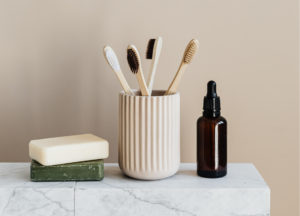
BHA + BHT:
- What is it? Chemical derivatives of phenol that are often used as preservatives in makeup and skin care.
- Where to find it: Lipsticks and moisturizers.
- Why it’s a problem: The International Agency for Research on Cancer classifies BHA as a possible human carcinogen and definite endocrine disruptor. The European Commission on Endocrine Disruption has also listed BHA as a Category 1 priority substance, based on evidence that it interferes with hormone function. Long-term exposure to high doses of BHT has been proven to be toxic in mice and rat studies (this is the primary way we study substances & medications for human use in cases where using a human subject is deemed unethical) , causing liver, thyroid and kidney problems and affecting lung function.
- Aliases: butylated hydroxyanisole + butylated hydroxytoluene
DEA:
- What is it? DEA is a chemical compound used to make cosmetics foamy, creamy or sudsy.
- Where to find it: DEA is mainly found in moisturizers, sunscreens, soaps, cleansers, and shampoos.
- Why it’s a problem: Exposure to high doses of these chemicals has been shown to cause liver cancers and precancerous changes in skin and thyroid. The European Union classifies DEA as harmful on the basis of danger of serious damage to health from prolonged exposure.
- Aliases: diethanolamine
Triclosan
- What is it? Despite being a known endocrine-disruptor with lasting effects on hormones and fertility (it’s banned in the EU!) Triclosan is a common antibacterial agent added to water-based skin care products.
- Where to find it: You’re likely to find them in liquid products like foundations, concealer, mascara and lipgloss along with antiperspirants/deodorants, cleansers, and hand sanitizers as a preservative and an anti-bacterial agent.
- What it’s a problem: Triclosan can pass through skin (studies show 75% of Americans have triclosan in their urine) and preliminary research shows that it likely interferes with hormone function. Environment Canada has categorized triclosan as toxic to aquatic organisms, bio-accumulative, and persistent – meaning it doesn’t breakdown easily and will end up in our water supply. It’s also believe that the extensive use of triclosan in beauty products may contribute to antibiotic-resistant bacteria.
- Aliases: Irgasan DP-300, Lexol 300, Ster-Zac, Cloxifenolum
Parabens:
- What is it? Parabens are the most widely used preservative in cosmetics.
- Where to find it: Used as a preservative in many conventional personal care products (an estimated 75 to 90% of cosmetics contain parabens). They are also used as fragrance ingredients; as these recipes are considered trade secrets manufacturers are not required to disclose parapets in their list of ingredients.
- Why it’s a problem: Parabens are rapidly absorbed through the skin and stored in our body tissues. Parabens have been detected in breast tumor tissues and are known to have hormone disrupting effects. It has been estimated that women are exposed to 50 mg per day of parabens from cosmetics and studies conducted by the CDC found four different parabens in human urine samples, indicating cumulative exposure despite the “very low” / “safe” levels found in beauty products.
- Aliases: Methylparaben, butylparaben, propylparaben, isobutylparaben, ethylparaben, etc.)
Fragrance:
- What is it? The term fragrance on a cosmetic ingredients list represents a complex mixture of dozens of chemicals; over 3,000 chemicals are approved for use as fragrances in Canada.
- Where to find it: perfumes, most personal care products – the word “fragrance” provides an opportunity for manufacturers to hide a lot of ingredients that don’t have to be listed on the label.
- Why it’s a problem: Fragrances contain a number of endocrine disrupting chemicals; associated with thyroid disease, infertility, hormonal cancers, and early menopause. One common EDC found in perfumes called DEP, used to make smells last longer, is a known cause of hypothyroidism. “Fragrance” is also a term that is unregulated in Canada and there are thousands of chemicals that can be hidden in beauty products by simply calling them ‘fragrance’
- Aliases: natural fragrance, perfume
Phthalates:
- What is it? These are chemicals mainly used as plasticizers, i.e., substances added to plastics to increase their flexibility, transparency, durability, and longevity.
- Where to find them: Perfume, hair spray, deodorant, almost anything fragranced (shampoo, laundry detergent, etc.) nail polish and insect repellent. DEHP is a particularly worrisome form of phthalate that is found in personal care products.
- Why it’s a problem: Phthalates are thought to mimic and displace hormones and interrupt their production which can have a range of unpleasant effects including menstrual irregularities, infertility and hormonally-dependant cancers. Phthalates have been shown to cause infertility in both animals and humans and researchers believe that these changes to fertility can be passed on from generation to generation. Sperm counts have dropped significantly over the past few decades and these study results suggest that a parent’s exposure to endocrine disrupting chemicals can actually affect their baby’s future fertility.
- Aliases: DBP (di-n-butyl phthalate), DEP (diethyl phthalate), DEHP (di-(2-ethylhexyl) phthalate or bis (2-ethylhexyl) phthalate), BzBP (benzylbutyl phthalate), and DMP (dimethyl phthalate)
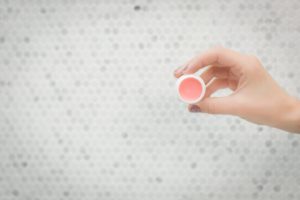
How to Switch to Clean Beauty:
Start with exposure:
Start by taking a look at your makeup bag, bathroom & shower caddy and think about which of these products cover the most surface area on your body. For most people this is body lotion, foundation, deodorant and blush / bronzer. Replace these products first since they cover such a large area and are used with consistency. We also encourage you to purchase a few clean lip sticks / lip balms since these products have direct access to your digestive tract through your mouth (your lips are at the end of the digestive system, now you know!). We’ve been committed to cleaner cosmetics for over a decade now and just recently switched to a natural mascara (Ilia lengthening mascara is everything!), so there’s no need to go full tilt when you’re just starting out.
Transition to ‘Clean’ beauty as you finish up old product:
This is our top tip for transitioning to cleaner beauty products because it is far less wasteful than doing a full makeup kit overall. Slowly replace your old favourites with clean beauty dupes. Not only will you feel less overwhelmed but this strategy also gives you more time to ‘research’ your next purchase. Ask those ‘granola’ girlfriends of yours which brands they’re using, or check out some green beauty blogs for clean cosmetic inspiration.
Trusted Clean Makeup Brands
The world of clean beauty has changed so much over the past decade. Us haute hippies now even have a ton of chic and effective beauty options available at Sephora! These are our tested and approved clean beauty brands and go-to products if you’re looking for a place to start:
ILIA – Their lipstick is everything:
- Tint Skin – combines skincare + SPF + light coverage, it’s perfect for that sheer barely-there makeup look.
- Tinted Lip Conditioner – we’re obsessed with these sheer, hydrated lipsticks & own them in almost every shade. Arabian Knights + Nobody’s Business are favourites.
- Mascara – This is one of our all-time favourite products; the mascara that finally made us given up our lance obsession.
RMS Beauty – This brand was our first experience with clean beauty and it set the bar really high. Their make up is creamy, dreamy and very natural:
- Un Cover-up Concealer – thick enough to cover dark bags and blemishes while feeling light and moisturizing on the skin.
- Living luminizer – this holy-grail product is a favourite of every clean beauty blogger and eco-conscious celeb. Give it a try and you’ll see why.
- Lip to Cheek – this 2 in 1 lip and cheek tint comes in gorgeous vibrant colours and is a great place to start if you’re looking for a fun way to start experimenting with natural beauty.
Alumier MD – we loved this line so much we’re going to start carrying it in the clinic + our online store (stay tuned):
- Sheer Hydration Broad Spectrum Sunscreen SPF 40 – physical sunscreen (meaning zinc replaces ozybenzone as the protective ingredients) provides powerful broad-spectrum protection against harmful UVA and UVB rays while moisturizing & protecting your skin with vitamin E, resveratrol and grapeseed extract.
- Retinol Resurfacing 1.0 – While retinol is somewhat controversial in the clean beauty space there’s nothing like it when it comes to preventing fine lines and wrinkles. This version works! but is also free or parabens, SLS, etc.
Beauty Counter – while we’re not normally a fan of ‘MLM’ this make up line is just too good to write-off, their products speak for themselves (not all of them, and we have to admit quite a few are over priced, but they have some serious must-have beauty products):
- The Clean Deo – we’ve been waiting months for this to arrive to Canada and it was well worth the wait. The smells are lovely (we’re partial to rose), packaging 10/10 & best of all they really work.
- Overnight Resurfacing Peel – one of those ‘maybe a little more expensive than it should be but still incredible products’. Slap this on before bed under your favourite serum and you’ll wake with noticeably glowy skin.
- Conditioning Lipstick – Pearl is the perfect subtle wear to work colour that leaves our lips moisturized and a tiny bit shimmery.
Misc – we pick up a the following miscellaneous one-off products from our favourite online retailer the detox market:
- Vintner’s Daughter Serum – it’s quite the splurge, but totally worth it. One bottle lasts almost 6 months and our skin has never looked better.
- Rahua Shampoo – smells like palo Santo and leaves hair squeaky clean for days while somehow keeping it soft and moisturized.
- Fit Glow lip Serum – hydrating and plumping (actually works) with beautiful colours. We’ve partial to ‘Liv’ a sheer but bright pink.
- Takesumi Dry Shampoo – shake it into your hair before bed and it magically removes all the greasy without contributing to a lot of build up on the scalp.
Resources
Unsure about a beauty product that you love? Check out Think Dirty, Skin Deep, and Good Guide – our three favourite apps designed to give you unbiased information about cosmetic and beauty products.
References:
- Balabanic D, Rupnik M, Klemencic AK. Negative impact of endocrine-disrupting compounds on human reproductive health. Reprod Fertil Dev. 2011;23(3):403-416.
- Black RE, Hurley FJ, and Havery DC. “Occurrence of 1,4-dioxane in cosmetic raw materials and finished cosmetic products.” Int J PharJ AOAC Int. 84, 3 (May-Jun 2001):666-70.
- Brashear, A. et al. “Ethylene oxide neurotoxicity: a cluster of 12 nurses with peripheral and central nervous system toxicity.” _Neurology _46, 4 (Apr 1996):992-8.
- Calafat, A. “Urinary Concentrations of Triclosan in the U.S. Population: 2003-2004.” Environ Health Perspect 116, 3(Mar 2008):303-307 http://ehp03.niehs.nih.gov/article/fetchArticle.action?articleURI=info:doi/10.1289/ehp.10768
- Canosa, P. et al. “Aquatic degradation of triclosan and formation of toxic chlorophenols in presence of low concentrations of free chlorine.” Analytical and Bioanalytical Chemistry 383, 7-8 (Dec 2005): 119-1126.
- DHI Water and Environment. Study on Enhancing the Endocrine Disrupter Priority List with a Focus on Low Production Volume Chemicals. Revised Report to DG Environment. Hersholm, Denmark: DHI, 2007.
- Epstein, S. with Fitzgerald, R. Toxic Beauty. Dallas: BenBella Books, 2009.
- Gee, RH et al. “Oestrogenic and androgenic activity of triclosan in breast cancer cells.” Appl Toxicol.28, 1 (Jan 2008):78-91.
- http://www.chem.unep.ch/pops/ritter/en/ritteren.pdf
- http://www.inchem.org/documents/cicads/cicads/cicad55.htm
- https://www.ncbi.nlm.nih.gov/pubmed/30103013
- https://www.ncbi.nlm.nih.gov/pubmed/23904465
- https://www.ncbi.nlm.nih.gov/pubmed/23904465
- https://www.ncbi.nlm.nih.gov/pubmed/29996728
- https://www.ncbi.nlm.nih.gov/pmc/articles/PMC3845732/
- https://medicalxpress.com/news/2018-03-prenatal-exposure-plasticizer-affect-male.html
- http://www.who.int/mediacentre/factsheets/fs225/en/
- Johnson BL. What are the human health effects of PCBs? Clearwater News & Bulletins.
- Marques-Pinto A, Carvalho D. Human infertility: are endocrine disruptors to blame? Endocr Connect. 2013;2(3):R15-R29
- O.H. et al (2006) Methylparaben potentiates UV-induced damage of skin keratinocytes, ScienceDirect, Toxicology, Volume 227, Issues 1-2, 3 pages 62-72
vi Y.o. et al (2008) Combined Activation of Methyl Paraben by Light Irradiation and Esterase Metabolism toward Oxidative DNA Damage, Chem. Res. Toxicol., 21 (8), pp 1594-1599 - U.S. FDA. Parabens. http://www.fda.gov/Cosmetics/ProductandIngredientSafety (last update Oct 31, 2007).
- Vince, G. “Cosmetic chemicals found in breast tumours.” New Scientist. Jan 12, 2004. http://www.newscientist.com/article/dn4555-cosmetic-chemicals-found-in-breast-tumours.html
- Yang, J. “Experts concerned about dangers of antibacterial products.” The Globe and Mail. Aug 21, 2009. http://www.theglobeandmail.com/life/health/experts-concerned-about-dangers-of-antibacterial-products/article1259471/
If you’re interested in learning more about how naturopathic functional medicine can help you look and feel your best you can book an online appointment with Dr. Sarah here. (note: naturopathic care is only available to patients living in Ontario, Canada).
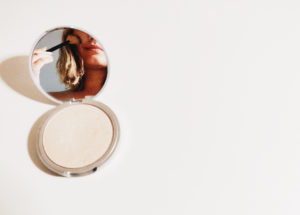
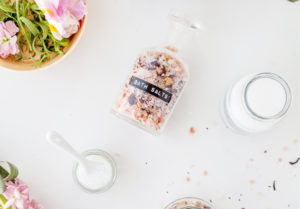
Great, thanks for sharing this article. Much thanks again. Awesome. Jeff Lindinha
Im very pleased to find this site. I need to to thank you for ones time for this particularly fantastic read!! I definitely really liked every part of it and I have you bookmarked to see new information on your site.
Good post. I learn something totally new and challenging on blogs I stumbleupon every day. It will always be interesting to read through articles from other writers and use a little something from other sites.
Itís hard to find experienced people about this subject, however, you sound like you know what youíre talking about! Thanks
I am impressed with this web site , rattling I am a fan . Jerrell Wolk
You completed a few nice points there. I did a search on the subject matter and found nearly all folks will have the same opinion with your blog. Elroy Noh
Really enjoyed this post. Really thank you! Really Great. Chance Armstong
You are my aspiration , I own few blogs and very sporadically run out from to post . Geoffrey Goold
This is a unquestionably interesting post. You are doing seep with writing. Modesto Krysiak
Very good article! We will be linking to this great post on our site. Keep up the great writing. Darrel Jowers
Great, thanks for sharing this blog. Much thanks again. Cool. Gerry Favia
Pretty! This has been an extremely wonderful post. Thanks for supplying this info. Emery Lovick
Wow, great article. Much thanks again. Much obliged. Danial Brenner
Way cool! Some extremely valid points! I appreciate you writing this article plus the rest of the website is also really good. Lupe Strenge
Thanks so much for the article post. Really thank you! Cool. Carlos Sojo
This design is spectacular! You definitely know how to
keep a reader amused. Between your wit and your videos,
I was almost moved to start my own blog (well, almost…HaHa!) Wonderful
job. I really enjoyed what you had to say, and more than that, how you presented it.
Too cool!
An interesting discussion is definitely worth comment. I do believe that you should publish more about this subject, it may not be a taboo matter but typically people dont discuss these subjects. To the next! Many thanks!!
I have to thank you for the efforts youve put in writing this blog. Im hoping to check out the same high-grade blog posts by you later on as well. In fact, your creative writing abilities has encouraged me to get my own website now 😉
I have to thank you for the efforts you have put in writing this site. I really hope to view the same high-grade content by you later on as well. In fact, your creative writing abilities has inspired me to get my very own blog now 😉
May I simply say what a comfort to discover somebody who genuinely knows what they are talking about over the internet. You actually understand how to bring a problem to light and make it important. More people ought to check this out and understand this side of the story. I cant believe you arent more popular because you surely possess the gift.
I must say that this is really an insightful post and i am very sure that the content of this article will be of so much help to many others, just as it has greatly helped me. This is a very detailed article on what you plan to share on your page. i look forward to seeing more articles from you. thank you Elbert Dombroski
Thanks for thr great article!
Can I just say what a reduction to find someone who truly is aware of what theyre speaking about on the internet. You undoubtedly know how you can carry an issue to mild and make it important. Extra folks have to read this and understand this aspect of the story. I cant consider youre no more standard since you positively have the gift. Roy Willi